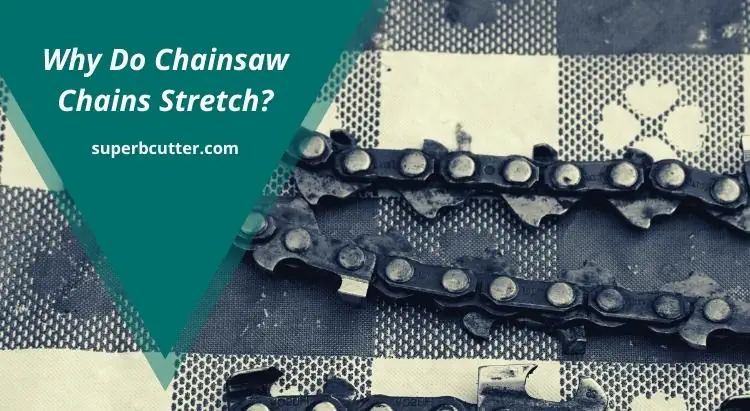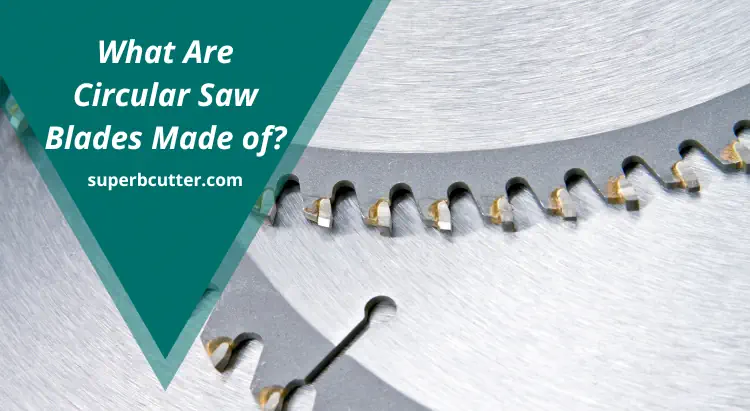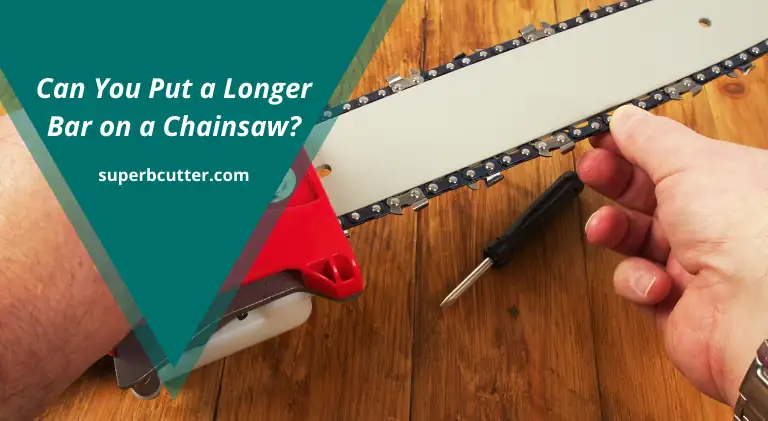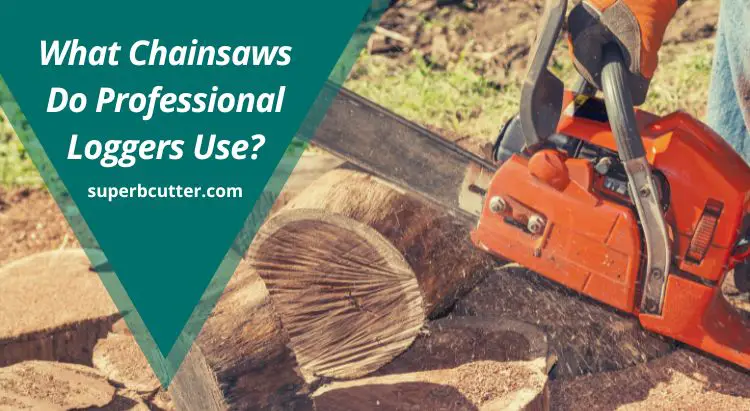Why Do Chainsaws Have Spikes? – [Beginner’s Guide]
It’s a question that has puzzled mankind for centuries: why do chainsaws have spikes? Some say it’s to help the saw cut better, while others believe they are there to protect the user’s hands. But what is the real reason behind this design choice?
Chainsaws have spikes because it helps to stabilize the saw when cutting through tough material, such as thick tree branches. Additionally, they provide traction on slippery surfaces. In other words, chainsaw spikes act as a support for the tool during the job.
These are some of the main reasons why chainsaws have spikes but there’s definitely a lot more to this story.
If you’re curious about this topic, then keep on reading as I am going to tell you not only about why do chainsaws have spikes but will also tell you about different types of spikes and how they can be used.
![Why Do Chainsaws Have Spikes? - [Beginner's Guide] 1 Why Do Chainsaws Have Spikes 1](https://www.superbcutter.com/wp-content/uploads/2022/07/Why-Do-Chainsaws-Have-Spikes-1.webp)
Why Do Chainsaws Have Spikes?
As mentioned before, the main reason chainsaws have spikes is to help them cut through tougher materials. Spikes can also help clear away debris and provide traction on slippery surfaces.
There are different types of spikes and each type serves a different purpose. For example, some spikes are designed to help the saw blade grip the material it’s cutting, while others are meant to help prevent the saw from slipping.
The type of spike that a chainsaw has will depend on its intended use. For example, for cutting through thick tree branches will have different spikes than one that is designed for general use.
Different Types of Spikes
There are three main types of spikes: toothed, bumper, and notched. Toothed spikes have sharp teeth that help the saw blade grip the material it’s cutting.
Notched spikes, on the other hand, have a series of small indentations that help prevent the saw from slipping.
Chainsaws can have either type of spike or a combination of both. Apart from that, bumper spikes are also common. These are spikes that are located at the end of the saw blade and help to prevent the saw from damaging the material it’s cutting.
How to Use Chainsaws with Spikes
Chainsaws with spikes can be used for a variety of different tasks. They can be used for cutting through thick branches, clearing away debris, and even for traction on slippery surfaces.
When using a chainsaw with spikes, it’s important to be careful and make sure that you’re using the right type of spike for the task at hand. For example, if you’re cutting through a thick branch, you’ll want to use a toothed spike.
But if you’re just clearing away some debris, a notched spike will do the job just fine.
No matter what type of Spike you use, always be careful and use caution when operating a chainsaw.
What are bucking teeth on a chainsaw?
Another common question people ask is what are bucking teeth on a chainsaw? Bucking teeth are actually just another type of spike. They are specifically designed to help the saw blade grip the material it’s cutting.
Bucking teeth are usually found on saws that are designed for cutting through thick branches. However, they can also be found on some general-use chainsaws.
The main property of bucking teeth is that they are very sharp, which helps the saw blade grip the material. Furthermore, these teeth are aligned in such a way that they create a cutting action, similar to that of a knife.
While bucking teeth are not as common as other types of spikes, they can be very useful for certain tasks.
![Why Do Chainsaws Have Spikes? - [Beginner's Guide] 2 A powerful chainsaw cutting tree barks](https://www.superbcutter.com/wp-content/uploads/2022/07/A-powerful-chainsaw-cutting-tree-barks.webp)
What is the Difference Between Chainsaw Spikes and Chain teeth?
The main difference between a chainsaw spike and chain teeth is that spikes are specifically designed to help the saw blade grip the material it’s cutting.
Chain teeth, on the other hand, are designed to actually do the cutting. Chainsaw spikes can be either toothed or notched, while chain teeth are always toothed.
While both spikes and chain teeth are designed to help the saw blade grip the material, only spikes are specifically designed for that purpose. Chain teeth are meant for cutting and nothing else.
Do all chainsaws have spikes?
No, not all chainsaws have spikes. In fact, most chainsaws don’t have any spikes at all. Chainsaws that are designed for general use usually don’t have any spikes.
Only chainsaws that are designed for specific tasks, such as cutting through thick branches or clearing away debris, will have spikes.
Are Chainsaw Spikes Universal?
No, chainsaw spikes are not universal. They are specific to the type of chainsaw they are meant for.
For example, a chainsaw that is designed for general use will have different spikes than one that is designed for cutting through thick branches.
This is because each type of saw has different needs when it comes to gripping the material it’s cutting.
Are Chainsaw Spikes Removable?
Yes, chainsaw spikes are removable. This is because they are usually not permanent fixtures on the saw.
They are usually only attached when needed and can be removed when they are no longer needed.
This allows the user to choose when and how they want to use spikes on their saw.
![Why Do Chainsaws Have Spikes? - [Beginner's Guide] 3 A chainsaw without spikes](https://www.superbcutter.com/wp-content/uploads/2022/07/A-chainsaw-without-spikes.webp)
Can Spikes Reduce the Backfire?
Ok so far after reading about the spikes and their uses on a chainsaw, you’re probably thinking to yourself, “Can spikes reduce the backfire?”
The simple answer to this question is no, they can’t. Spikes are not designed to reduce the backfire.
They are only meant to help the saw blade grip the material it’s cutting.
What they will do however is help to prevent the saw blade from slipping, which can cause the saw to backfire.
So while spikes can’t directly reduce the backfire, they can indirectly help to prevent it.
Do Chainsaw Spikes dull the Blade?
No, chainsaw spikes do not dull the blade. In fact, they actually help to keep the blade sharp.
This is because the spikes help to keep the blade from slipping, which can cause it to dull.
So not only do spikes not dull the blade, but they actually help to keep it sharp.
Do Spikes Wear Out?
Yes, chainsaw spikes will eventually wear out. This is because they are constantly being used to help the saw blade grip the material it’s cutting.
over time, the spikes will begin to wear down.
When this happens, they will need to be replaced in order to keep the saw performing at its best.
How Often Should Spikes Be Replaced?
There is no set answer for how often spikes should be replaced. This is because it all depends on how often the chainsaw is used.
If the chainsaw is only used occasionally, then the spikes may not need to be replaced for a few years.
However, if the chainsaw is used on a daily basis, then the spikes will need to be replaced more often.
As a general rule of thumb, it’s a good idea to replace the spikes every year or two.
This will ensure that the saw is always performing at its best.
Final Words
So Why Do Chainsaws Have Spikes?
Chainsaws have spikes because they help the saw blade grip the material it’s cutting. Without spikes, the saw blade would slip and potentially cause the saw to backfire.
Spikes also help to keep the blade sharp by preventing it from slipping. Over time, however, the spikes will begin to wear out and will need to be replaced.
Replacing the spikes every year or two will ensure that the chainsaw is always performing at its best.
Do you have any questions about chainsaw spikes? Feel free to ask in the comments below and I’ll be happy to answer them.


![Can You Split Wood with a Chainsaw? - [Read This First] 6 Can You Split Wood with a Chainsaw? – [Read This First]](https://www.superbcutter.com/wp-content/uploads/2022/01/Can-You-Split-Wood-With-a-Chainsaw_.webp)




